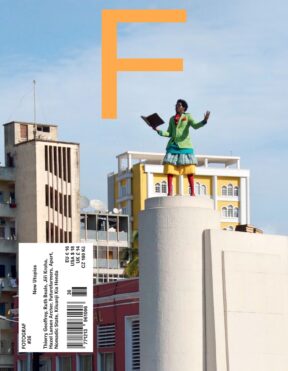A Geology of Media
Just as the 1970s declared the end of the history of art, we are now witnessing a dissolution of the boundaries between science and art; the organic and inorganic world; rational methods and alchemy.
My aim is to suggest that this third volume of a trilogy by Finnish theorist Jussi Parikka, A Geology of Media (2015, following Digital Contagions, 2007 and Insect Media, 2010), focuses mostly on descriptions and examples of phenomena on the borders of nature, technology and culture in a very unorthodox and experimental manner. Throughout the book, he gives examples of the artistic practices of specific artists who explore these topics through artistic research.
Jussi Parikka (born 1976) is a professor at the University of Southampton (Winchester School of Art) and a visiting professor at FAMU in Prague, where he leads a project titled Operative Images and Visual Culture. He is considered a superstar of alternative media theory, and his blog currently offers an essay on the coronavirus epidemic.
A Geology of Media arises from the presumption that the world of thought, perception and ethics does not exist without a relationship to the Earth’s geological layers and its climate. Parikka explores the materiality of media technologies and their influence on geophysical nature. He radicalizes media history in response to the growing authoritativeness of the ruling world powers and the influence of corporate interests on practically all fields.
Geology is not just an apt metaphor for media theory—it is the true memory of an epoch which many theorists have labeled the Anthropocene. All the media we as users rely upon draw on geological fossils stored under the surface of the Earth for billions of years. They are created from the chemical elements of nature and they produce an unimaginable amount of digital waste. Not only have we mined the subterranean layers that define our planet, we have also taken control of the atmosphere with the aim of transmitting signals.
The materiality of media consists in their natural foundation—the minerals and materials stored in the Earth. The author uses the term medianatures to refer to this relationship, thus shifting the focus to geology and geophysics. Parikka also places the term geology in the context of ethics and philosophy (the geology of morals and geophilosophy), proceeding from the post-anthropocentric visions of Deleuze and Guattari and their theory of geological thought, which is not conceived of as the link between object and subject, but rather takes place in the relationship of territory and Earth as a movement of multiplicities.
Following a demanding philosophical introduction, Parrika focuses on deep time as the foundation of media and culture, the psychogeophysics of technology, dust as a metaphor of global works and the materialism of residua. The last chapter focuses on media fossils. The author reminds us of the idea of using geological time when thinking about media art and digital culture; to place long geological duration in opposition to the myth of linear progress; to compare the time of human affairs with geological time. Media which use up large amounts of energy create electronic waste and in turn influence the entire planet. That’s why it is time to actively invent a different future. Parikka warns us about the production of perishable hardware, a long list of which immediately evokes a list of future electronic waste—media fossils.
The term psychogeophysics was coined in 2010 by the London Psychogeophysics Summit Collective as a method of mapping the relationships between the Earth, capitalism and technology (as a complement to psychogeography, which only focuses on the urban environment); to explore how technology and ecology have shaken our certainty of what it means to be human.
In an appendix written with Garnet Hertz, Parikka proposes that artists do not explore the potential of new media, instead working with planned obsolescence as an artistic method. They discuss circuit bending or hardware hacking and practices aimed at the political economy of IT. He proposes the archeology of media as an artistic method focused on the issues of dead, “zombie” media, which also herald the death of nature.
Parikka’s thought is radical, but we need to hear voices outside the mainstream enthusiasm and clamor for new technologies and realize that these won’t save us.
#36 new utopias
Archive
- #45 hypertension
- #44 empathy
- #43 collecting
- #42 food
- #41 postdigital photography
- #40 earthlings
- #39 delight, pain
- #38 death, when you think about it
- #37 uneven ground
- #36 new utopias
- #35 living with humans
- #34 archaeology of euphoria
- #33 investigation
- #32 Non-work
- #31 Body
- #30 Eye In The Sky
- #29 Contemplation
- #28 Cultura / Natura
- #27 Cars
- #26 Documentary Strategies
- #25 Popular Music
- #24 Seeing Is Believing
- #23 Artificial Worlds
- #22 Image and Text
- #21 On Photography
- #20 Public Art
- #19 Film
- #18 80'
- #17 Amateur Photography
- #16 Photography and Painting
- #15 Prague
- #14 Commerce
- #13 Family
- #12 Reconstruction
- #11 Performance
- #10 Eroticon
- #9 Architecture
- #8 Landscape
- #7 New Staged Photography
- #6 The Recycle Image
- #5 Borders Of Documentary
- #4 Intimacy
- #3 Transforming Of Symbol
- #2 Collective Authorship
- #1 Face

